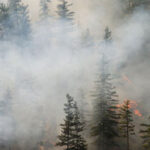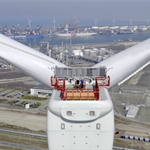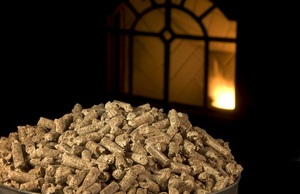The Ever-Widening Impacts of Wildfires
Energy Disrupter
ADVERTISEMENT
As I skimmed the headlines this morning, I read that Canada is experiencing its worst fire season in modern history. Much of the U.S. has experienced some degree of smoke in the past few weeks as it moves out of Canada, and according to reports, a massive plume is on its way to parts of Europe. And the season has not even peaked. The statistics released by the Canadian Interagency Forest Fire Center are staggering—so far, 17.8 million acres have burned, a new record. As to the question of what can be done to mitigate these wildfires, one of the underlining solutions is more dollars, efforts and support toward forest management. This brings me to our cover story and page-20 feature, “Behind the Curtain,” in which I discuss Air Burners’ air curtain technology with company President Brian O’Connor. After buying the company decades ago, he spent many years tweaking and perfecting these systems (he calls them pollution control devices), which—in a nut shell—burn clean wood and ag waste, catch the smoke and particulate matter and burn it again, producing a very minute amount of ash, as well as biochar. And, a new product line allows for electricity production on-site, which can be used to power the machines being used, or plugged into the grid. One of the company’s biggest markets, according to O’Connor, is wildfire mitigation—in fact, Cal Fire owns about a dozen of them. “They arrive on-site and ready to do the job,” he says. “You can drag them around, and they’re easy to take care of.” Though the technology has been tested and approved by the U.S. EPA and seemingly holds great potential, O’Connor believes there are still some misperceptions about them.
Shifting gears, our page-14 feature, “High Hopes for Hydrogen,” lays out federal strategy to renewable hydrogen deployment in the U.S., its potential and the challenges ahead. While this story just scratches the surface in terms of developments in the U.S., it will give you an idea of where things are at—or rather, where they need to be at in order to reach goals. As Retka Schill writes, a top concern is how the carbon intensity of hydrogen will be determined for the new federal incentives, and the specifics of the eligibility roles—specifically dairy biogas, as there is an ongoing debate regarding its carbon intensity score.
On that note, be sure to check out our page-30 contribution, “Overhauling Carbon Accounting,” by EcoEngineers’ Brad Pleima. In the article, Pleima discusses an improved carbon accounting methodology in development by the company and the American Biogas Council. Pleima says the hope is that the methodology will make it easier for biogas projects to quantify and market carbon benefits from renewable natural gas, biogas electricity and digestate.
Finally, later this summer we will be hard at work on a number of U.S. and Canada map projects (fuel pellet plants, biomass power and waste-to-energy facilities, RNG plants, as well as biodiesel, renewable diesel and sustainable aviation fuel operations). If something has changed at your plant in terms of production capacity, fuel, ownership, etcetera—or if you’re building new—we greatly appreciate you letting us know.
Author: Anna Simet
Editor
[email protected]










